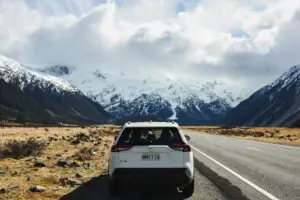A team from The Australian National University is to lead a trial of 51 Nissan Leaf electric vehicles to test how they can act as mobile batteries for the grid, and the potential creation of an EV fleet that could deliver a massive amount of storage – five times that of the Snowy Hydro 2.0.
The two-year trial has been dubbed the Realising Electric Vehicles-to-grid Services (REVS) and is backed by the Australian Renewable Energy Agency. It is the biggest effort to date in Australia to see how EVs can become a valuable resource for the grid, rather than a potential load problem.
It will comprise 50 Nissan Leaf EV in the ACT Government fleet and one from the fleet of local utility ActewAGL and will seek to demonstrate the feasibility of vehicle-to-grid (V2G) services – and will include social and economic factors, as well as technical.
Nissan Australia managing director Stephen Lester says there have been several successful trials conducted in overseas markets, but realising it in Australia is an important milestone.
Lester sees a future where Australian homes can essentially be off the grid, transforming electric vehicles from vehicles to mobile energy solutions. For customers with solar panels, the Leaf’s 40kWh battery can store solar during the day and then use that energy to supply home’s power needs at night.
Alternatively, customers who use a workplace or public site to charge their vehicles can then use that power to supply their homes. A parked car could even become a revenue-generating asset for its owner by providing support to the energy grid by feeding power back into the grid and providing ancillary services.
“With more people working from home currently, with a Nissan LEAF in the driveway, a household could significantly reduce their power bills by using their vehicle as a battery,” Lester says. And if they have solar panels, they can maximise their use of renewable energy, and still have an exciting zero-emissions car to drive.”
“We know V2G works in the lab but we need to demonstrate the reliability and viability of V2G services in the real world at scale,” said research lead Dr Bjorn Sturmberg, from the ANU’s Battery Storage and Grid Integration Program.
“We need to prove the control, coordination, and cybersecurity of the technology systems, as well as the crucial business and regulatory models to make V2G attractive to all stakeholders.”
This will be the one the biggest V2G trials in the world, and made easier by the fact that the vehicles come from a fleet owner that is taking part in the trial.
The potential is enormous. If Australia’s current fleet of more than 14 million vehicles turns electric, that provides the potential of a 1,800 gigawatt hour resource for storage. That’s more than five times the 350GWh storage from Snowy Hydro.
ARENA chief executive Darren Miller says the trial will look at the ability of EVs to provide frequency and ancillary services to the grid – an essential tool traditionally supply by coal, gas and hydro plants, but increasingly in recent times by big batteries such as Hornsdale and others big batteries, as well as household batteries as part of virtual power plants.
“The project will be the first time that a fleet of vehicles using bi-directional chargers will supply FCAS to the NEM and thereby provide services that improve energy security and avoid blackouts,” he said in a statement.
“It will also be the first time an EV fleet will be paid for providing electricity services, testing new revenue streams that could improve the total cost of ownership of EVs. Fleets make up more than half of all new vehicles sold annually in Australia and the results of this trial will help inform future procurement choices of private and public sector fleet managers.
To read the full story, please go to our EV-focused sister site, The Driven, and click here.










